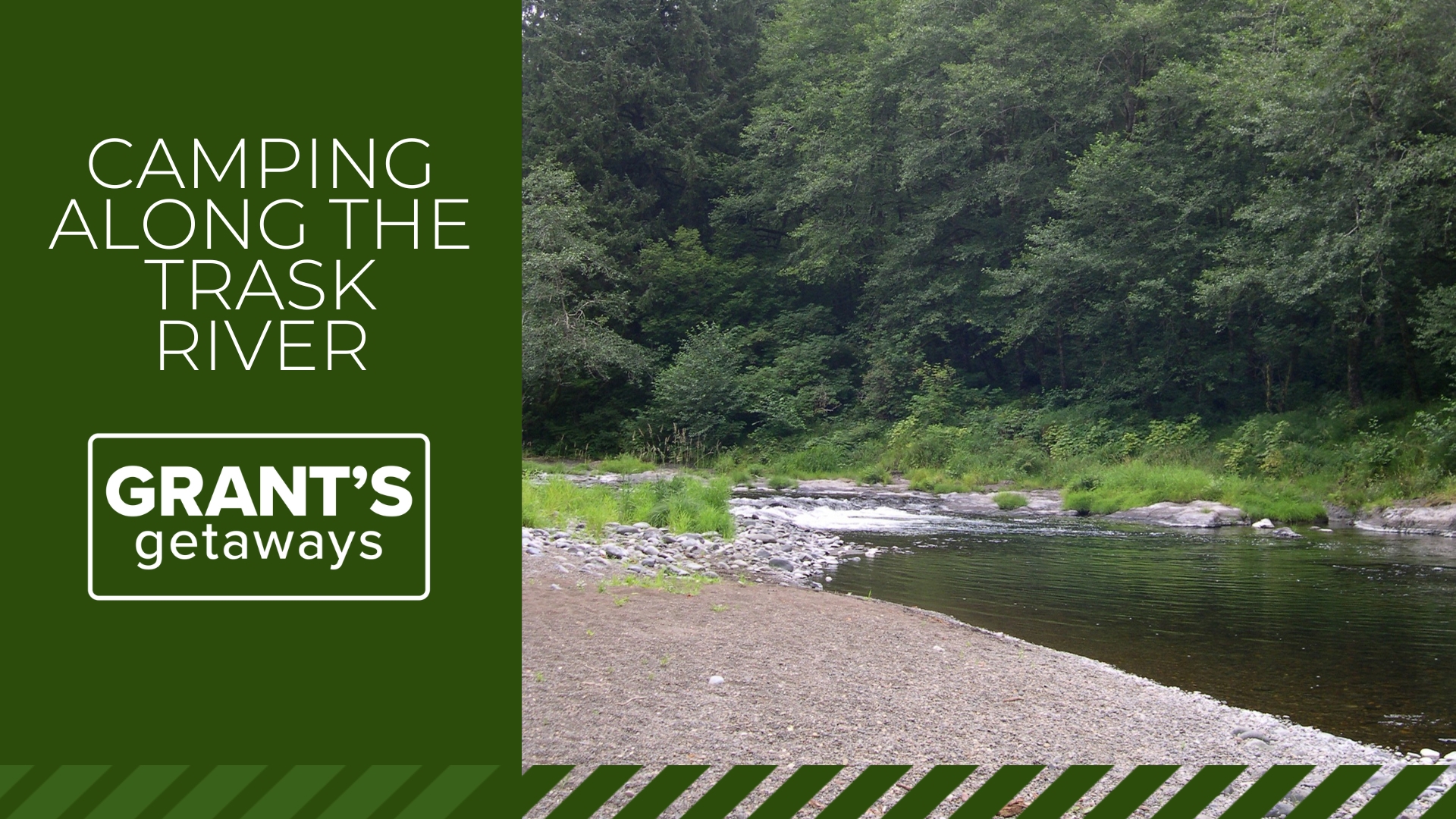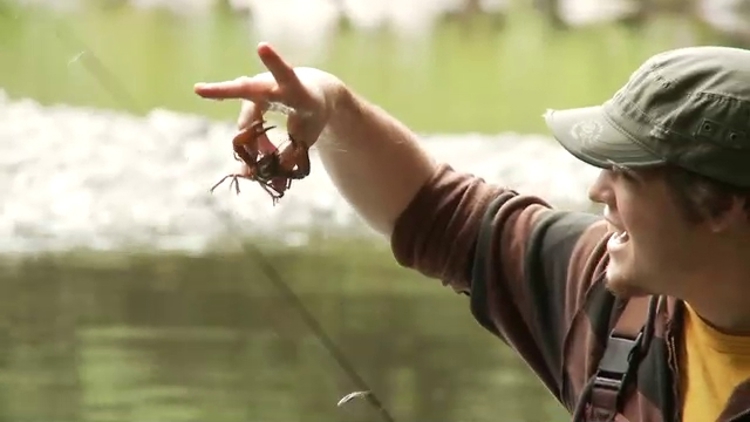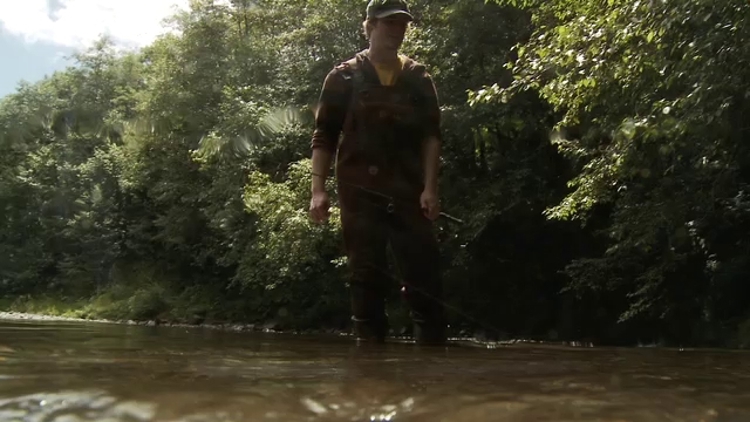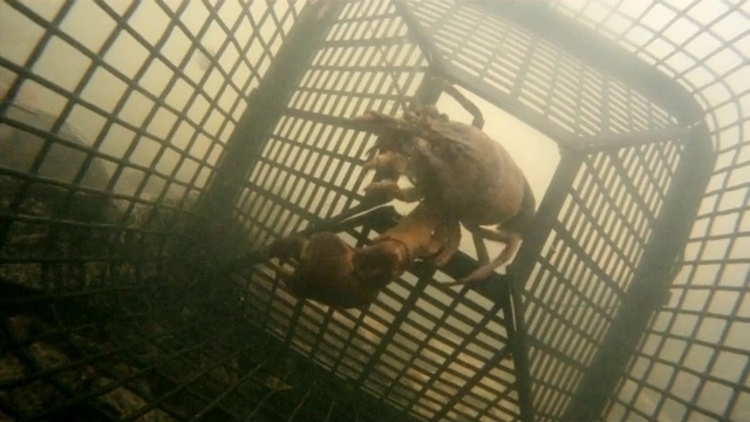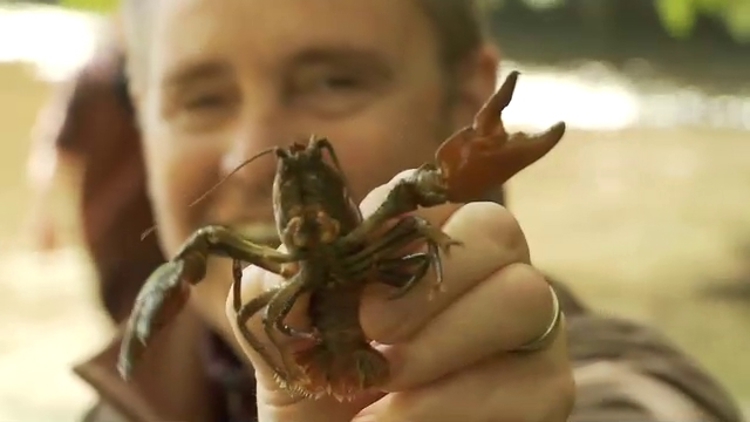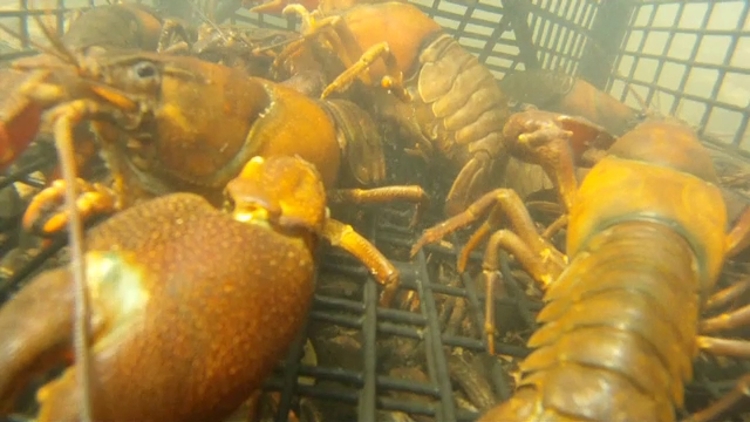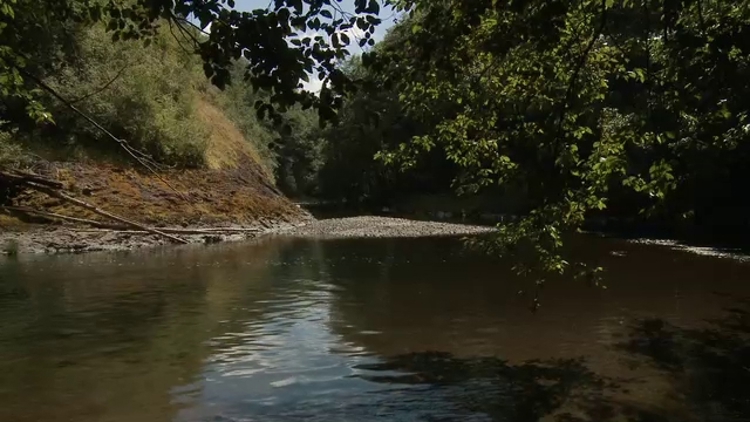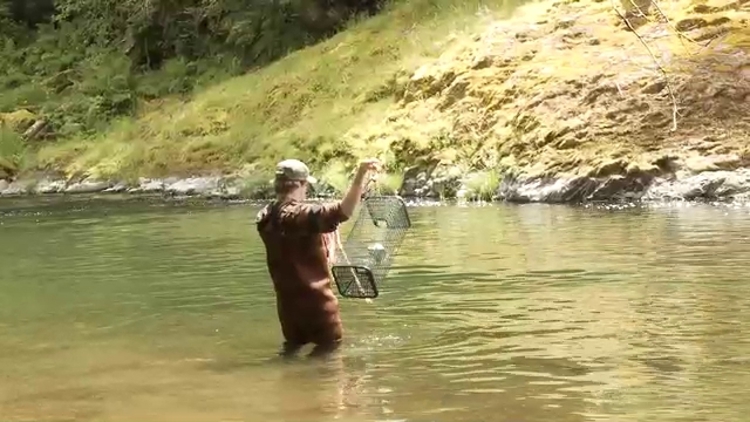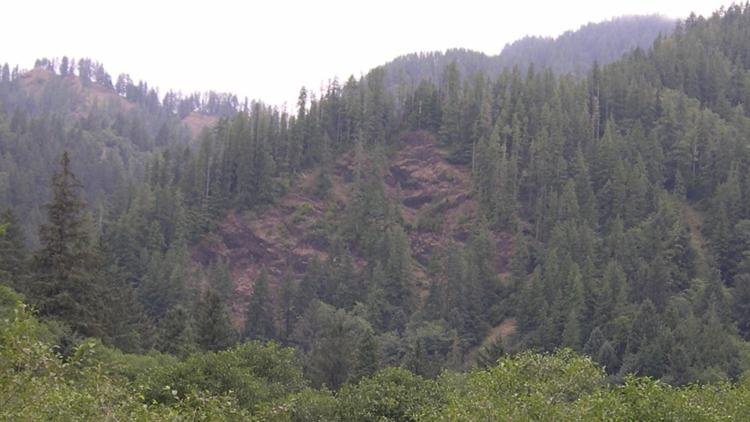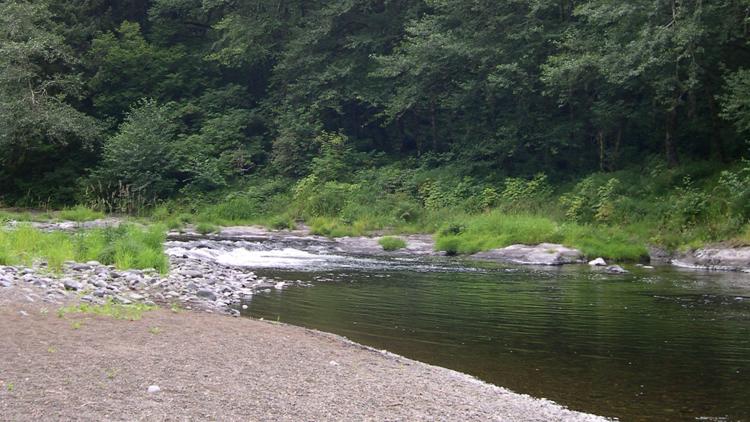PORTLAND, Ore. — At long last, summer is hitting its warmest stride! If you are on the hunt for a way to cool down, consider a gas tank getaway along a small coastal stream called the Trask River.
Hiking, fishing and camping adventures are easy to find off the beaten path in the Tillamook State Forest — less than 80 miles from Portland.
Trask River County Park, one of the easiest campgrounds to reach in Tillamook County, is a sprawling, forested affair with sixty campsites — and many of the sites are situated streamside.
The park, open daily, is also a destination that’s a bit of a secret, and except for holiday weekends, crowds are seldom the rule.
You’re likely to find plenty of elbowroom at this Coast Range paradise that is located high in the Oregon Coast Range.
The Trask River hides small pockets of cool water and Oregon Dept. of Forestry’s Nathan Seable called it a “refreshing moment” near a county park that’s often overlooked: “Trask River Park.”
“It is a really golden nugget for recreation and pretty much a full-service campground. There are no RV hook ups, but there’s running water and vault toilets and more of a family-oriented type camping area. A beautiful setting with a nice day use area and you can get down and use the river."
Just four miles away is a trail – along the narrow winding ribbon of asphalt named Trask River Road.
You’ll know the spot: watch for bald eagles soaring overhead or mid-summer wildflowers still showing off and as large trailhead sign that marks the start of a moderate hike called Peninsula Trail.
“The Peninsula Trail is about a mile long loop, and it is on a unique geological formation of lava that bubbled up out of the earth eons ago," Seable explained, "It became a hard basalt feature that the Trask River could not cut through, so it went around and created the peninsula.”
Along the trail, watch for charred remains of burned-out old growth tress from the four major fires, (collectively called the Tillamook Burns) which roared through this country in the last century.
When you reach the river and the trail loop turns to take you back, you’ll find picnic tables for a river shore lunch — perfect place to linger for a while.
“It’s a beautiful spot,” said Seable, "Especially when the river’s down in summer! There’s a nice beach for kids to play along the river and people can fish too.”
While salmon, steelhead and cutthroat trout swim in waters, take some time to explore the river’s nooks and crannies for something else — this is where the crawfish live.
Photos: Camping and fishing along the Trask River
I have been visiting the Trask River each summer for more than fifty years to explore the river’s depths and catch small crustaceans called “crawfish.”
My kids grew up enjoying the area as well; sometimes with a mask and a snorkel so to dive and catch the crawfish by hand or with rod and reel a chunk of bacon at the end of a line.
You can also use a small wire-mesh trap (readily available at any sporting goods store) baited with a can of cat food.
Place the bait inside the trap as an attractant. The crawfish walk inside through the narrow funnel-like openings at either end. Once inside they can’t seem to find the way back out.
Attach a rope to the trap, toss it into a likely looking deep pool and then tie the rope off to a tree. Leave it in the river for a few hours, or if you're camping at the park, leave it in overnight. Retrieve it the next morning and it’s usually full of crawfish.
“You can find crawfish anywhere along the river in summer,” noted state fishery biologist Robert Bradley. “Walk out into any of the pools and even swifter water and start flipping over rocks and you’ll find some pretty quick. Folks can catch them by hand or with traps; it’s a bit like crabbing in the bay only on a smaller scale. It’s an abundant resource that people can enjoy all summer long."
No angling license or shellfish license is required to catch crawfish – and the limit is generous too: 100 crawdads per person per day is the daily limit.
We tossed our trap in the drink and spent the day lounging on the inviting beach. When the mood to move, or the heat of the sun, struck us--we would scamper into the river.
My youngsters and I have always had a ball along the Trask River--- diving, exploring, searching the river bottom’s nooks and crannies, and rolling over submerged rocks to see what secrets the river held.
Whenever a sizable crawfish (we’d made a vow not to keep any under five inches in length) appeared, the youngsters would carefully maneuver hands to capture the critter by its head, just behind its two impressive and sizable pincer claws. Catching crawdads by hand is fun sport and a delightful way to beat the summer heat.
Crawfish or crawdads or just plain “dads” are a creepy crawly kind of critter that kids love to catch, and they taste good, too.
We often prepare our catch using my good friend’s (see below - Birt Hansen Basic Crawfish Boil) recipe. The taste of fresh-cooked crawfish is sublime — a very mild shrimp like taste that’s somewhat delicate.
The taste, the setting, and the adventure offer a stark contrast to the broiling sun during the heat of summer — a perfect cap to a day’s adventure that your family will want to try soon.
Crawfishing and summertime confirm what you may suspect: you’re never too old to be a kid again — especially during the dog days of summer.
Getting there
From Portland, drive Oregon 6 to Tillamook. Approximately two miles east of Tillamook, watch for the Trask River Road cutoff. Turn left and continue for approximately six miles to the Trask River. Turn left and follow Trask River Road. The Peninsula Trailhead is located along Trask River Road approximately 9.3 miles from Highway 6; the park is approximately 3.5 miles further upriver on Trask River Road.
Birt Hansen’s Basic Crawfish Boil
This recipe relies on a handful of simple ingredients.
- 2 quarts water
- 1 cup vinegar
- 1/2 cup salt
- 1/2 cup pickling spice
- 4 bay leaves
- 2 to 3 pounds crawfish
Bring the water and seasonings to a boil, then add the crawfish. Cook no longer than three to four minutes. Overcooked, the crawfish become rubberlike and flavorless.
Spread out a sheet or two of newspaper on a picnic table, dump out the steaming crawdads, and dig in. Grab the tail section, pull it away, and simply peel off the tail shell--everything else will pull right out. Same with the claws--crack them open and pick out the meat.
This is hands-on eating at its finger-licking finest--and that’s best with youngsters who really get into their meals. Enjoy with a twist of lemon!
Be sure to watch the weekly half hour program of Grant’s Getaways. The show airs each Saturday and Sunday at 4pm on KGW.
You can also learn more about many of my favorite Oregon travels and adventures in the Grant’s Getaways book series, including:
- "Grants Getaways I," Photography by Steve Terrill
- "Grant's Getaways II," Photography by Steve Terrill
- “Grant’s Getaways: 101 Oregon Adventures,” Photography by Jeff Kastner
- “Grant’s Getaways: Guide to Wildlife Watching in Oregon,” Photography by Jeff Kastner
- “Grant’s Getaways: Oregon Adventures with the Kids,” Photography by Jeff Kastner
The book collection offers hundreds of outdoor activities across Oregon and promises to engage a kid of any age.
You can reach me: Gmcomie@kgw.com

